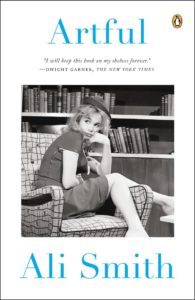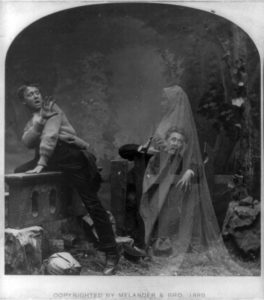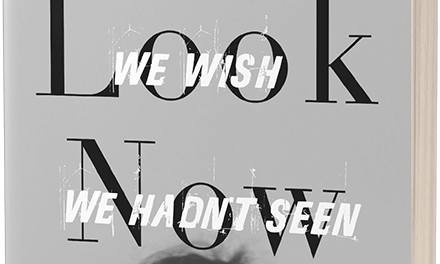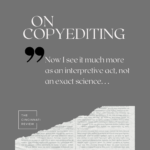Assistant Editor Molly Reid: Halloween is upon us. The time for pumpkin-carving, haunted houses, and candy. For young and old to dress up in costumes, try on other identities, inhabit the unknown, the sexy, the scary (or, sometimes, the downright terrible).
It is also the time for that other Halloween favorite: the telling of ghost stories. Whether or not we believe in ghosts, the ghost story allows us a pleasure similar to dressing up in costume: It lets us inhabit an in-between space, somewhere on the edge of reality. It allows us to entertain the idea (at turns comforting and frightening) that life does not, in fact, end with death. That the ones we’ve lost may return to us—though perhaps not always in the way we want them to.
The phrase “ghost story” may conjure a bonfire, a theatrical uncle, gullible kids, s’mores, the storyteller building up to a slapstick “boo.” But, in addition to the rich tradition of the ghost story (Shakespeare, Dickens, Edith Wharton), the current literary landscape is flush with haunting. Writers like Kelly Link and Carmen Maria Machado are killin’ it on the contemporary ghost story scene, while novels like The Nix by Nathan Hill and Lincoln in the Bardo by George Saunders have also embraced the ghost and received critical acclaim for it.
 In another recent haunted novel, Artful by Ali Smith, the narrator’s dead lover appears to her “covered in dust and what looked like bits of rubble.” This book consists mainly of four lectures Smith delivered at Oxford, broken into four sections titled “On Time,” “On Edge,” “On Form,” and “On Offer and Reflection.” Smith has said that the lectures appear in the book almost entirely in their original form. Filled with intelligence and wit, Smith riffs on everything from Dickens to Beyonce. It is a thrill just to see the way her mind works.
In another recent haunted novel, Artful by Ali Smith, the narrator’s dead lover appears to her “covered in dust and what looked like bits of rubble.” This book consists mainly of four lectures Smith delivered at Oxford, broken into four sections titled “On Time,” “On Edge,” “On Form,” and “On Offer and Reflection.” Smith has said that the lectures appear in the book almost entirely in their original form. Filled with intelligence and wit, Smith riffs on everything from Dickens to Beyonce. It is a thrill just to see the way her mind works.
But what makes this book phenomenal is the fictional frame, the ghost story. Not only does this frame provide a narrative arc that connects Smith’s disparate ideas, but the ghost provides the reader with emotional connection. Both visible and not visible, there and not there, the returned lover adds a depth, a texture to Smith’s riffs. In addition to this, it’s one of the most compelling love stories I’ve ever read, further blurring the conceptual division between the mind and the body/heart.
This kind of extended metaphor of the ghost also has a strong presence in our next issue of The Cincinnati Review, issue 14.2, available in the next few weeks. In Lindsey Drager’s story “The Two-Body Problem,” the narrator has just been hired as Assistant Professor of Grief in the Department of Longing. As time seems to leap forward and back, the narrator’s career unfolds in the margins, her relationship taking place mostly through long-distance phone calls.
In Natalia Theeodoridou’s story “Bone Music,” the narrator receives a box from his estranged mother after her death that contains copies of “bone music,” or “pirated copies of banned tunes, printed onto discarded X-rays from Soviet hospitals.” The son plays these tunes searching for some kind of meaning but finds none.
And in “On Static,” a piece of literary nonfiction by Lena Moses-Schmitt, the speaker mourns a lost friend while ruminating on the concept of static. Moses-Schmitt writes, “Though white noise calms babies, it’s often used in horror movies—a television switching on to a screen full of static—to kick up primal fear. . . . It’s how otherworldly forces (ghosts, the supernatural, demons) communicate with the living.”
These writers are not afraid to investigate our haunted present, our current state of in-betweenness. They push against boundaries and borders. They answer the current call for some kind of intervention— and maybe this is what’s hopeful about the ghost story: if all else fails, perhaps our dead will save us.












